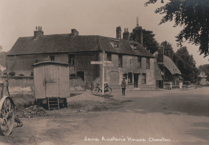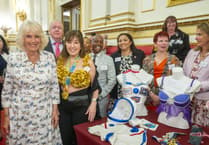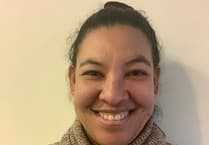THIS week, Peeps into the Past looks at another selection of vintage picture postcards and the messages written on the back of them.
Chobham Road in Woking is busy in this scene from the 1930s with plenty of motor vehicles and a policeman on point duty. On the left is a hanging sign in the form of a huge pair of spectacles advertising opticians Bateman’s. On the tall building on the right is the painted signage for ironmongers and builders’ merchants Skeet & Jeffes.
The back of the postcard features a George VI penny stamp, but the full date of the postmark cannot be discerned as it is over the illustration of two globes, part of publisher Valentine’s colophon. However, it is marked ‘Woking 12.15pm’.
The postcard was sent to Mrs Hubbert, 19 Chobham Road, Knaphill. The sender, Aunt Annie, wrote: “Dear Flo and Ada, Mother and I will not be up this afternoon as our Alf will arrive about 4 o’clock. He is coming sooner than expected.”
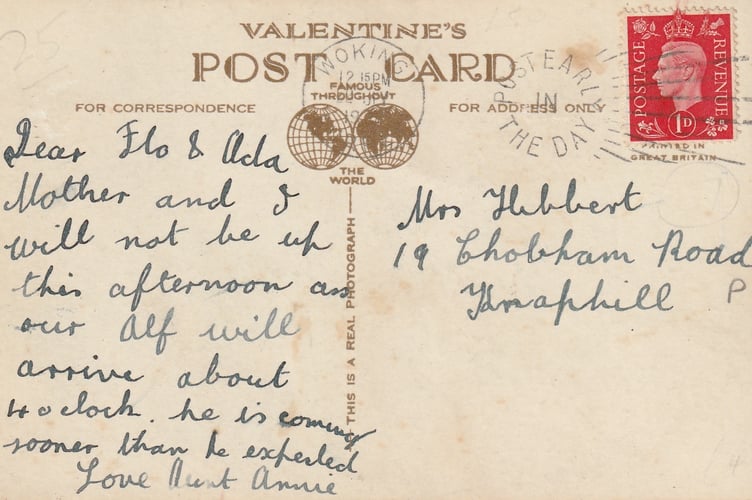
Did Annie post the card in the morning assured that it would be delivered by the postman that afternoon? With up to three collections and deliveries a day in times gone by, it was likely Annie’s postcard arrived on time.
The Hut Hotel that stood beside the London Road at Wisley is featured on postcard 2 with horse-drawn carriages outside. The postmark on the back of the postcard gives a date of 10 April 1912. The hotel was pulled down long ago when the A3 was widened. It stood just along from the turning to RHS Wisley Gardens and before the junction with the M25. Part of the edge of Boldermere Lake can be seen in the foreground.
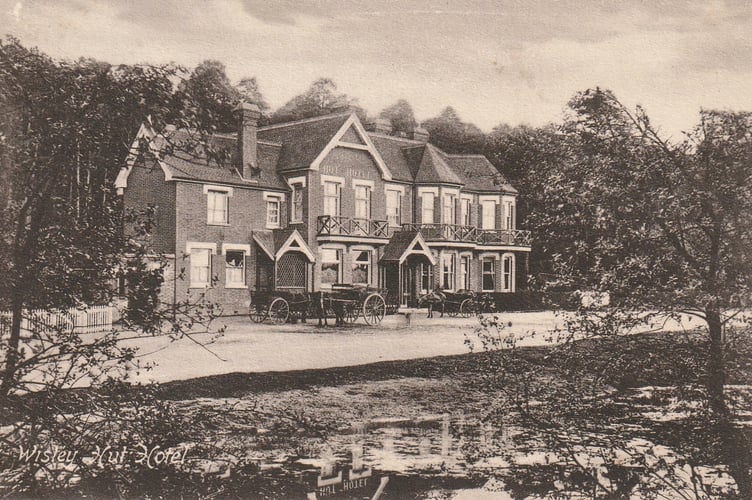
The card was sent to Mrs Paget, Bourne Road, Bexley, Kent. The sender, Nancy, wrote: “Dear Nell. Hope you reached home safely. The view is where we ‘went out in the country’. I expect we shall stay here over Sunday, but waiting to hear from Mother.”
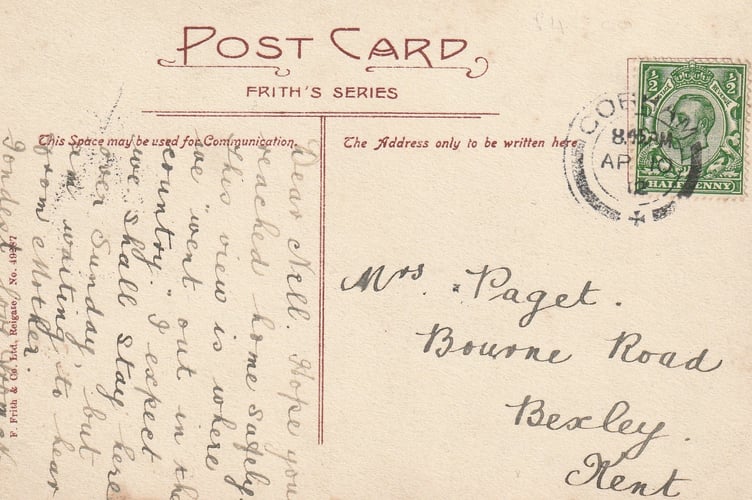
Postcard 3 shows St John’s Church, Woking. The church was built and consecrated in 1842 as a chapel of ease to St Peter’s Church in Old Woking. It was designed by the famous Victorian architect, George Gilbert Scott. A new settlement had been growing up alongside the Basingstoke Canal and it took its name from its new church. It became a parish in its own right in 1884.
The picture on the card was artificially coloured in the printing process. It was published by The Garlands Studio, Woking.
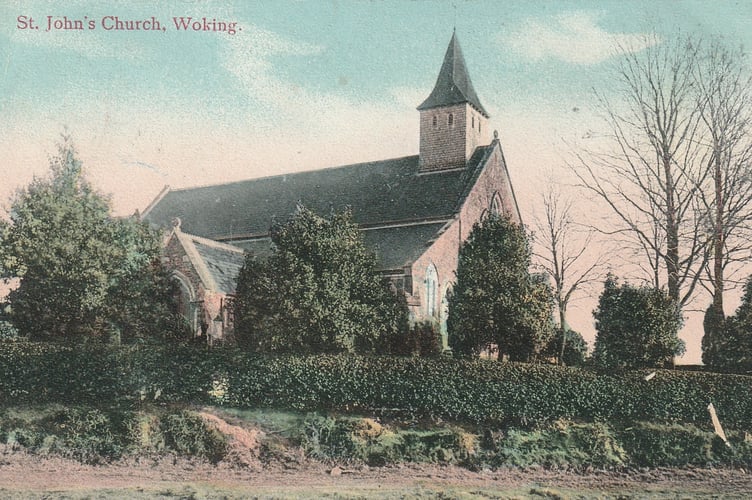
Of all the Woking area postcards I have in my collection, this one has the most intriguing message. It was sent to a Miss EJ Robinson, and addressed to her at St Olaves Workhouse, Ladywell SE. This was in Bermondsey and was a workhouse built solely for the elderly and infirm. Therefore it did not house other paupers, those termed as able-bodied poor, or unmarried mothers and children.
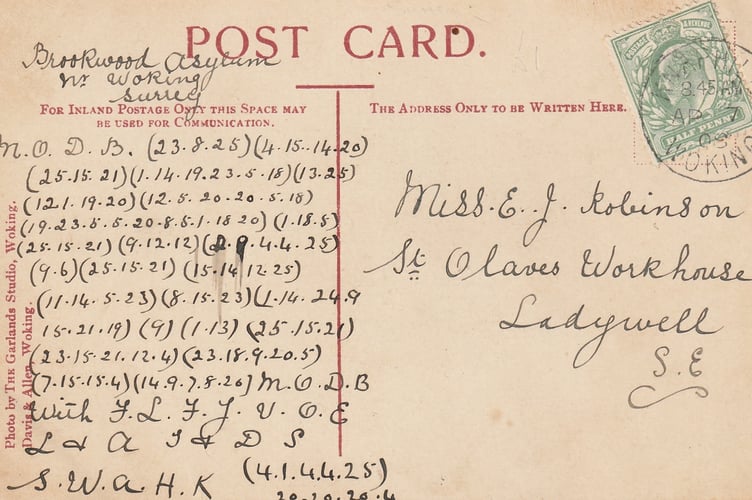
The sender of the card – whose name is not given, as the entire message is written in some sort of code – wrote from Brookwood Asylum. The card was posted in Woking on 7 April 1905.
If you have some memories or old pictures relating to the Woking area, call David Rose on 01483 838960, or drop a line to the News & Mail.
David Rose is a local historian and writer who specialises in what he calls “the history within living memory” of people, places and events in the west Surrey area covering towns such as Woking and Guildford. He collects old photos and memorabilia relating to the area and the subject, and regularly gives illustrated local history talks to groups and societies. For enquiries and bookings please phone or email him at: [email protected]


